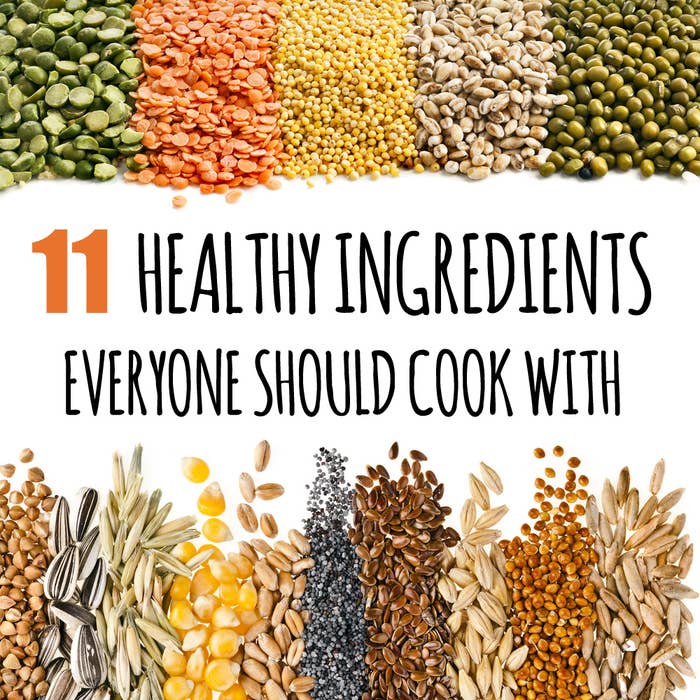
1. Wheat Germ


WHAT IS IT? Wheat germ sounds like powdered cooties, but it's actually really tasty and makes whatever you put it in feel virtuous (including Your Body). It's a nutty toasted flake made from the heart of the wheat berry.
WHY SHOULD I USE IT? Wheat germ is an easy way to add fiber, folic acid, and Vitamin E to your diet. You can use it almost anywhere you'd use a whole grain flour or rolled oats: on yogurt, in hot cereal, as breading for meat and fish, in baked goods, waffles, and pancakes.
RECIPES TO TRY:
2. Coconut Oil
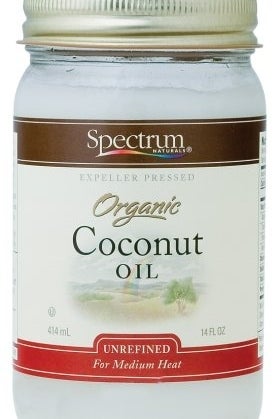

WHAT IS IT? You can buy the oil extracted from coconut meat in both unrefined ("virgin") and refined varieties. Refined has a milder flavor and is better for high-heat cooking (like sautéing and roasting); unrefined is more coconutty and works well at lower heats or in desserts.
WHY SHOULD I USE IT? Coconut oil's formerly sullied reputation has been redeemed by research showing that, although it is a saturated fat, its particular chemical makeup may actually have a positive (or at least neutral) impact on your cholesterol levels. Coconut oil is solid below room temperature (which is how this amazing magic shell chocolate sauce works), so it's a great dairy-free/vegan substitute for butter. But it's also a delicious way for all humans to add gentle coconut flavor to any food.
RECIPES TO TRY:
Coconut Oil Roasted Sweet Potatoes
3. Nutritional Yeast

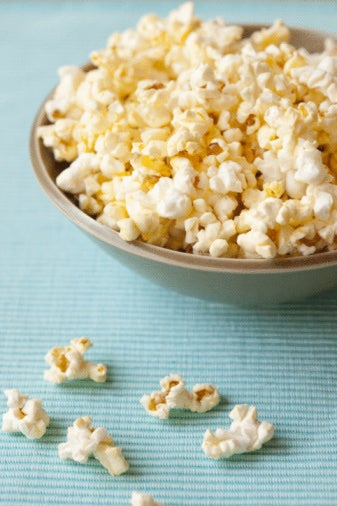
WHAT IS IT? OK: "Yeast," like "moist," is a terrible word. Fine. Let's move on. As any vegan could tell you, it's also a delicious thing you should be eating all the time. "Nutritional" or "food" yeast isn't the same yeast that comes in packets for baking bread — it's been pasteurized (aka heated until it's 100% dead) and then packaged in flake or powder form.
WHY SHOULD I USE IT? What you get is a magically CHEESY, nutty, addictive substance that you can sprinkle on popcorn or anything. And the best part it that it's a great source of protein and complex B vitamins that are especially hard to come by when you're vegetarian or vegan (but good for anyone).
RECIPES TO TRY:
4. Tempeh

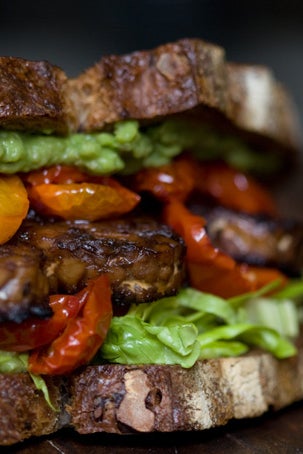
WHAT IS IT? Tempeh is a cake made out of whole, fermented, smushed-together soybeans (YUM!). It has a firm texture and a mild soy flavor.
WHY SHOULD I USE IT? Maybe you're remembering a soggy, gray-brown tempeh scramble inflicted upon you by imperious vegans in your college co-op house. Maybe you're screaming as you remember it. Stop screaming! Let tempeh redeem itself by cooking it in other, better ways. It's a versatile, protein-rich alternative to meat (that's more interesting than tofu), and eating less meat is basically always a good idea.
RECIPES TO TRY:
5. Flax Seeds
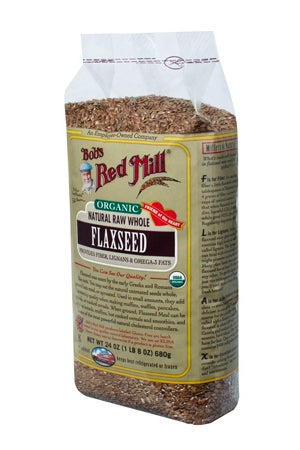
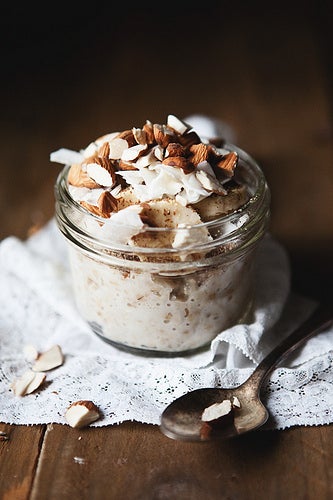
WHAT IS IT? Flax is a glossy little brown seed that you can buy either whole (good for sprinkling on yogurt and cereal, baking in bread, or mixing into granola) or ground into flour (good for adding to baked goods, smoothies, or pretty much anything).
WHY SHOULD I USE IT? Flax is a great source of fiber and omega-3 fatty acids. Most nutritionists recommend using the ground form (also called "flax meal") if you're looking to get maximum nutritional perks, but the whole seeds are great for adding texture and nutty flavor to food as well.
RECIPES TO TRY:
6. Miso

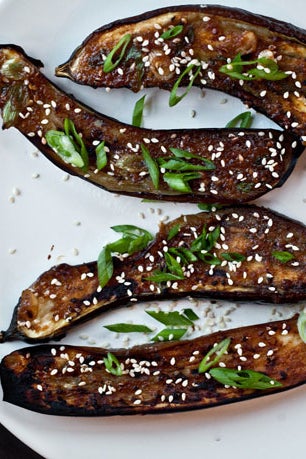
WHAT IS IT? A savory paste made by fermenting soy, rice, and/or barley. There are multiple different types of miso, and the color generally corresponds to the intensity of the flavor. White = mildest, yellow = less mild, red = strong.
WHY SHOULD I USE IT? Miso is a great way to add umami (savory, salty depth) to food without extra fat, meat or salt. It's also just generally delicious in spreads, dressings, marinades, soups, and all kinds of other situations.
RECIPES TO TRY:
Apple Cobbler with Miso Streusel
7. Liquid Aminos
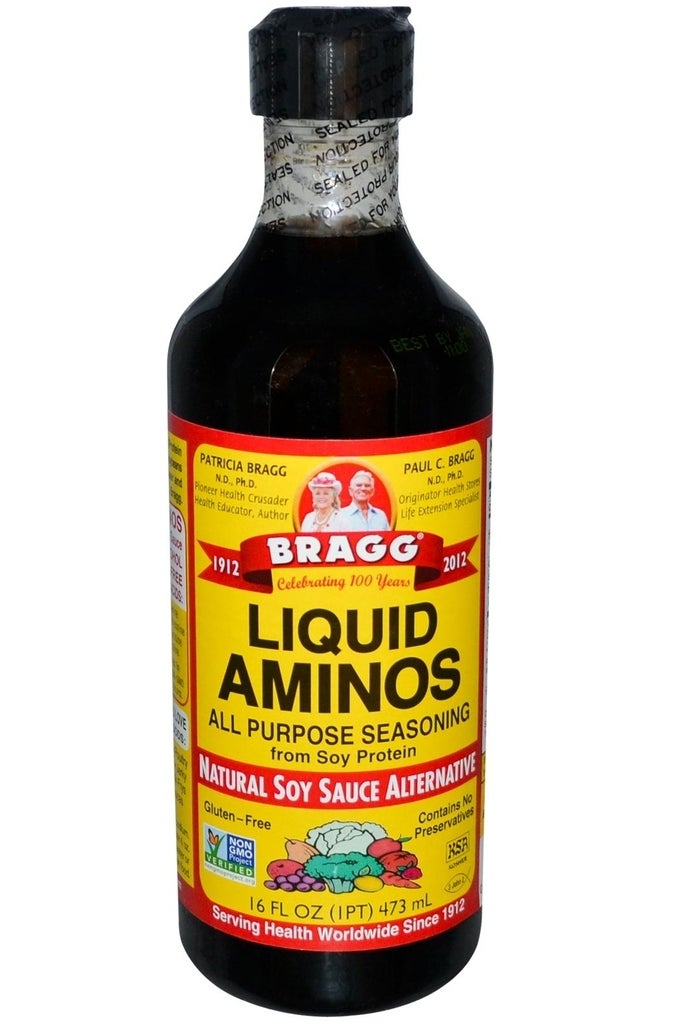
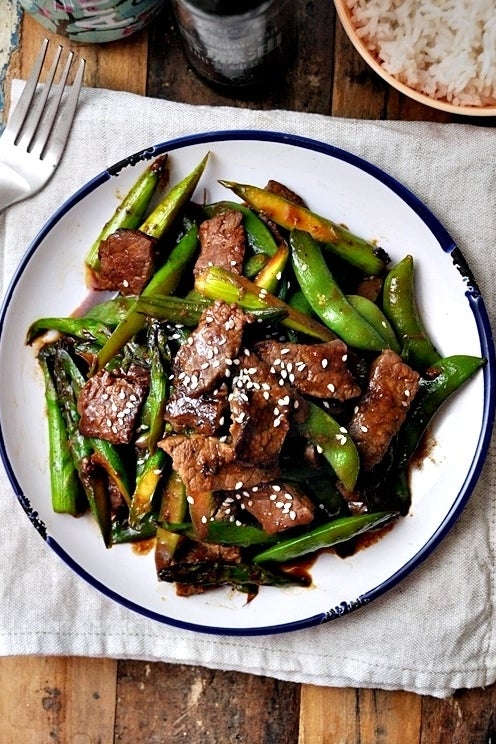
WHAT IS IT? A liquid made from fermented soy beans — basically, soy sauce. But without any gluten or added sodium and preservatives.
WHY SHOULD I USE IT? It's got a clean, umami-rich taste, lower sodium, and you can use it literally anywhere you would use soy sauce. Plus, Bragg is a charmingly insane company (sort of the Dr. Bronner's of food) that we should probably keep in business.
RECIPES TO TRY:
8. Chia Seeds
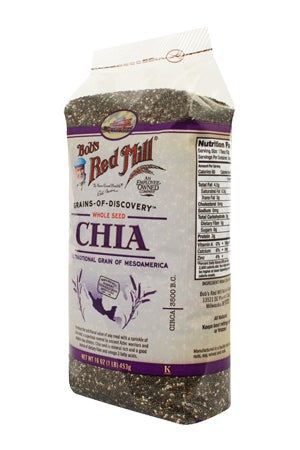

WHAT IS IT? Chia seeds (yes, that chia) come from a central American desert plant and have become a trendy food thanks to their nutritional content and intriguing gelatinous properties when mixed with liquid.
WHY SHOULD I USE IT? Chia is not the magic weight loss answer some people would like it to be, but that doesn't mean it's not a healthy, whole-grain alternative to processed carbs and a good thing to throw into the mix of what you eat. It makes great pudding, sort of similar to tapioca, and adds an element of gloopy excitement to drinks.
RECIPES TO TRY:
9. Seitan
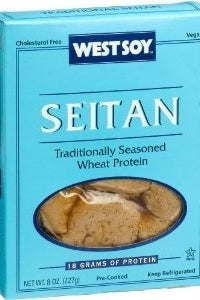
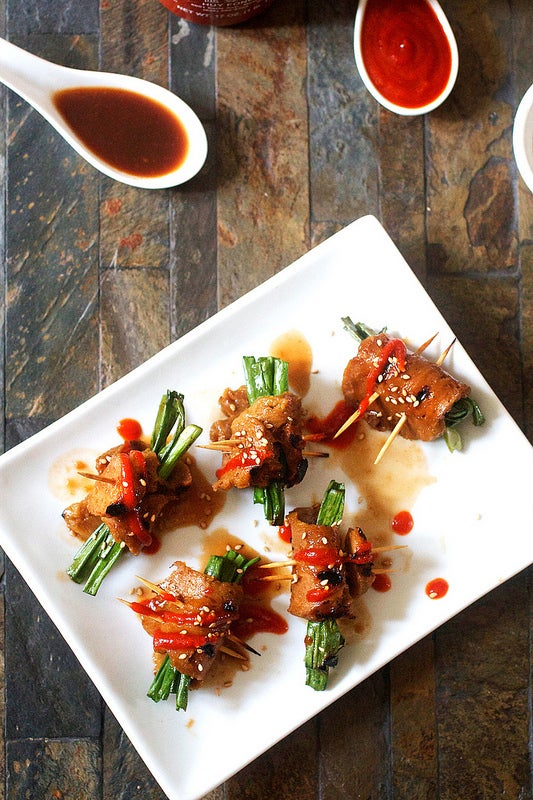
WHAT IS IT? Seitan is a firm, chewy incarnation of pure wheat gluten (the protein in wheat). It's often used as a meat substitute in vegetarian cooking. You can buy it packaged in multiple different flavors, or make your own.
WHY SHOULD I USE IT? Seitan packs even more protein than soy-based meat alternatives (tofu and tempeh), and is legitimately delicious if you cook it the right way.
RECIPES TO TRY:
10. Sunflower Butter
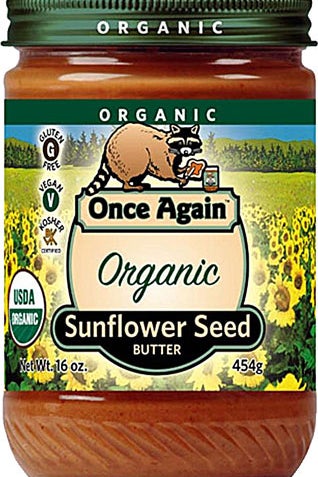
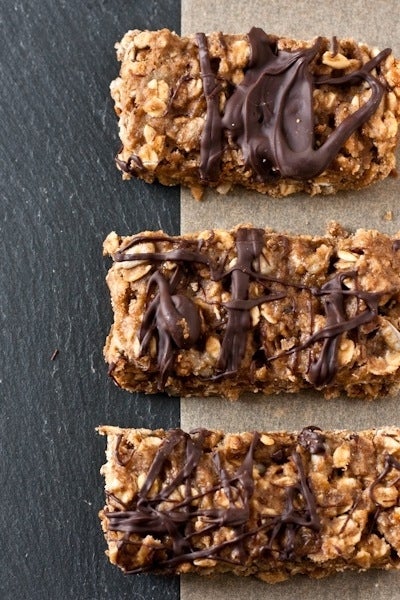
WHAT IS IT? The seed equivalent of peanut butter — just ground-up sunflower seeds, sometimes with a little salt and sugar added.
WHY SHOULD I USE IT? This stuff is hugely useful for anyone with peanut or tree nut allergies. It tastes good and works in basically all of the same situations. BUT it's also a healthy alternative for everyone, since it's higher in monounsaturated fat (the good kind) than its nutty cousins.
Recipes To Try:
11. Quinoa
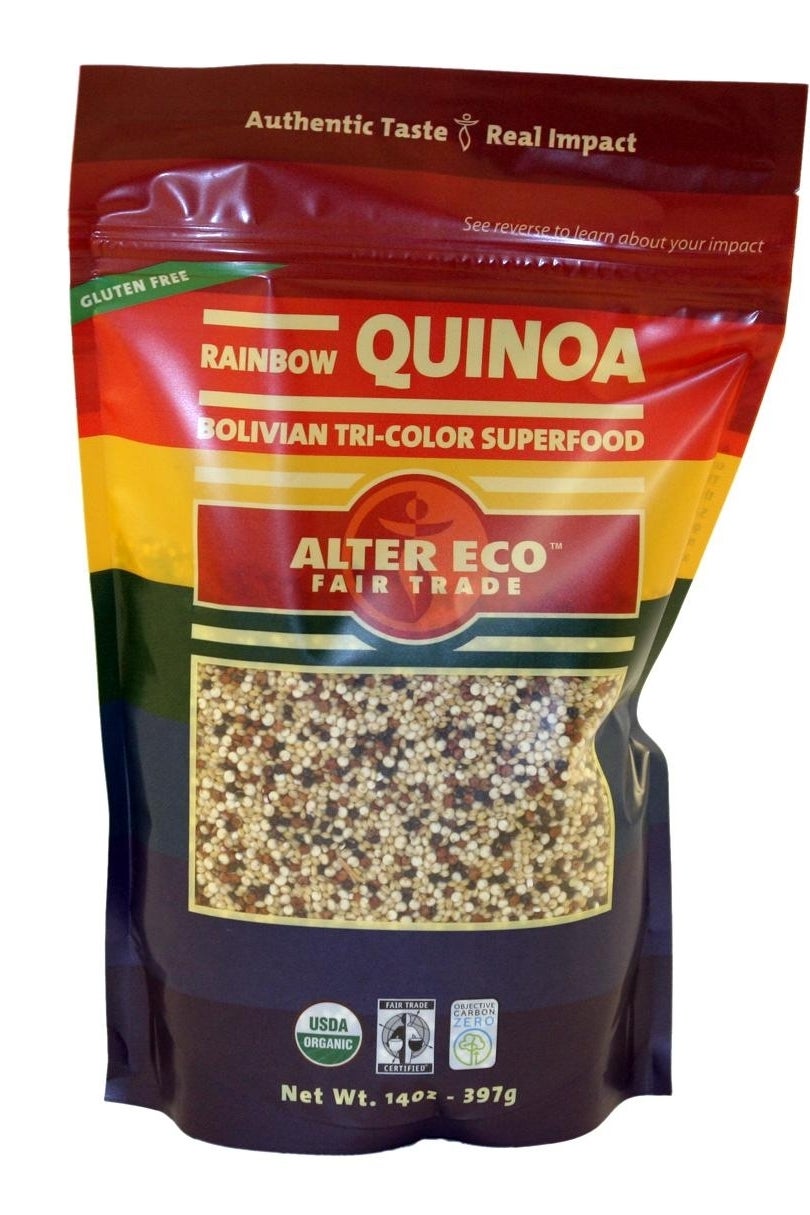

WHAT IS IT? A formerly obscure seed that's taken mainstream cooking by storm in the past few years. Quinoa cooks up into a fluffy, slightly crunchy texture and comes in multiple colors (black, red, and white). The quinoa boom has raised some concerns about its production, but you can eat it with a clean conscience if you look for Fair Trade-certified brands.
WHY SHOULD I USE IT? Quinoa contains all nine essential amino acids needed to make up complete protein, which is very unusual in the plant world. It's also got plenty of fiber and iron, it's tasty, and helps mix up the usual wheat and rice dominating your carb lineup. You can eat it straight up as a side, mixed with veggies to make a salad, in hot breakfast cereal, or baked into pancakes, desserts, granola, etc.
RECIPES TO TRY:
